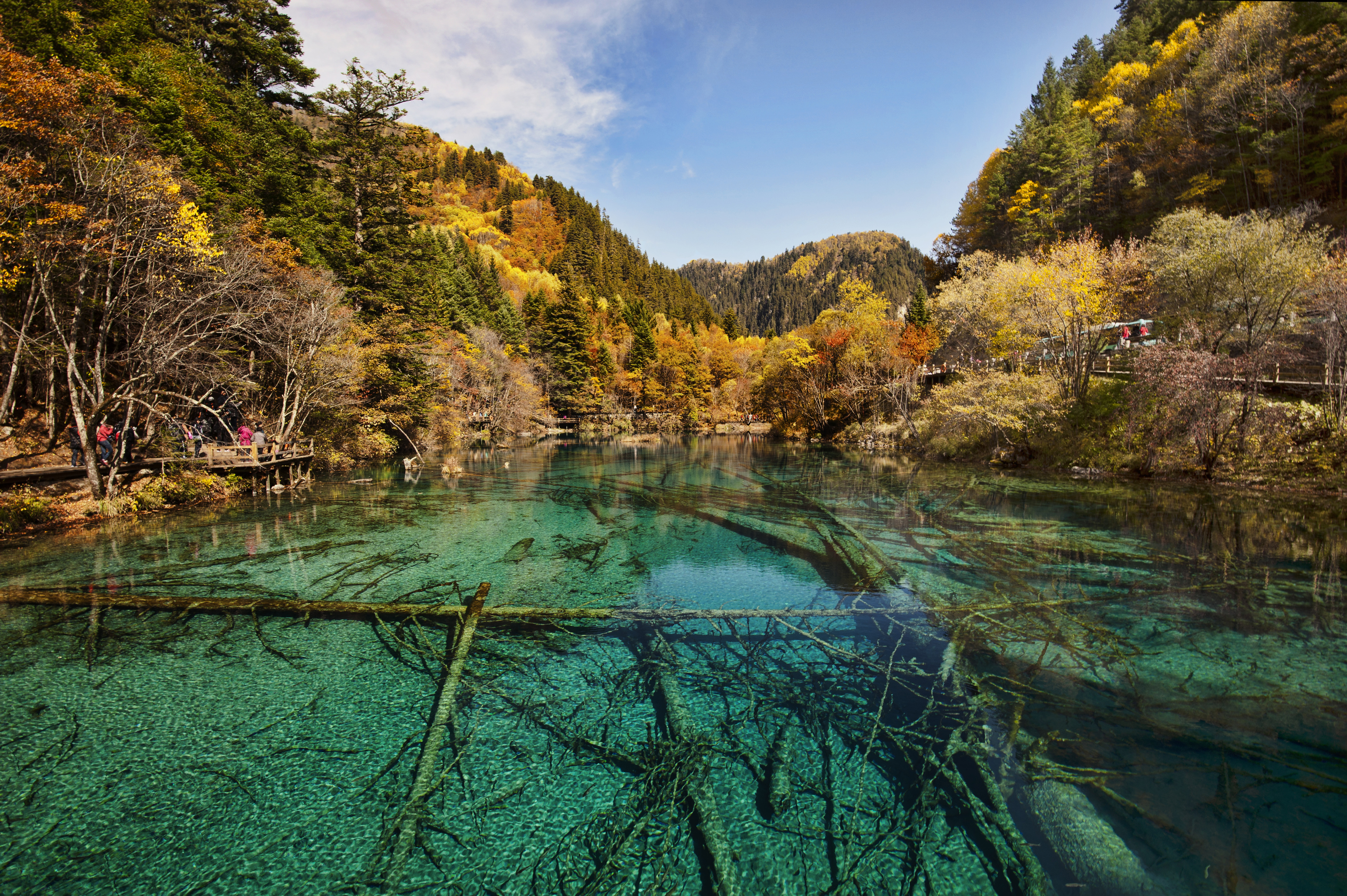
How High is Jiuzhaigou?
Stretching over 72,000 ha in the northern part of Sichuan Province, the jagged Jiuzhaigou valley reaches a height of more than 4,800 m, thus comprising a series of diverse forest ecosystems.
Jiuzhaigou's Altitude Range
Jiuzhaigou National Park isn't situated at a uniform altitude. Instead, its elevation varies greatly, contributing to the area's diverse landscapes and ecosystems. Here’s a breakdown of Jiuzhaigou’s altitude range:
| Location | Altitude (meters) | Altitude (feet) |
|---|---|---|
| Lowest point (mouth of Shuzheng Valley) | 1,998 | 6,555 |
| Highest point (peak of Zechawa Mountain) | 4,764 | 15,630 |
| Average elevation | 2,500 - 3,500 | 8,200 - 11,480 |
Impact of Altitude on Jiuzhaigou's Ecosystem
The varying altitudes found within Jiuzhaigou National Park play a crucial role in shaping its incredible biodiversity. Here’s how:
1. Distinct Vegetation Zones
- Mixed Forests (Lower Elevations): At lower altitudes (1,998 - 2,500m), Jiuzhaigou is characterized by mixed forests comprised of conifers and broadleaf trees. These forests receive ample sunlight and rainfall, creating an ideal habitat for various plant and animal species.
- Coniferous Forests (Mid-Elevations): As the altitude increases (2,500 - 3,500m), the landscape transitions into coniferous forests dominated by pine, fir, and spruce trees. These forests are adapted to cooler temperatures and a shorter growing season.
- Alpine Meadows and Scrublands (Higher Elevations): Above 3,500m, the terrain transforms into alpine meadows and scrublands. Harsh conditions with strong winds, intense sunlight, and freezing temperatures limit vegetation growth to hardy grasses, shrubs, and wildflowers.
2. Diverse Wildlife Habitats
The different vegetation zones created by the varying altitudes provide a wide range of habitats for a diverse array of animal species:
- Lower elevations: Inhabitants include the giant panda, golden snub-nosed monkey, and Temminck's tragopan.
- Mid-elevations: Home to species like the Sichuan takin, musk deer, and blood pheasant.
- Higher elevations: Offer suitable habitats for snow leopards, Himalayan blue sheep, and numerous bird species.
Exploring Jiuzhaigou's Different Altitudes
Visitors to Jiuzhaigou can experience the wonders of these different altitudinal zones through various well-maintained trails and boardwalks:
- Shuzheng Valley: This easily accessible valley offers a glimpse of the lower and mid-elevation forests.
- Zechawa Valley: Hike through diverse landscapes, starting from lush forests and ascending to stunning alpine meadows.
- Rize Valley: Explore the higher elevations of Jiuzhaigou, characterized by picturesque lakes and panoramic mountain views.
FAQs
1. What is the best time to visit Jiuzhaigou?
The best time to visit Jiuzhaigou is during autumn (September-October) when the foliage explodes into a vibrant tapestry of colors. However, spring (April-May) and summer (June-August) also offer pleasant weather and blooming flowers.
2. Are there any altitude sickness concerns in Jiuzhaigou?
While the lower elevations of Jiuzhaigou (below 2,500m) pose minimal risk, visitors venturing to higher altitudes should be aware of potential altitude sickness. Acclimatizing gradually, staying hydrated, and avoiding strenuous activities upon arrival can help prevent altitude-related issues.
3. Can I see snow in Jiuzhaigou?
Yes, snowfall is common in Jiuzhaigou during winter (November-March), particularly at higher elevations. The snow-covered landscapes and frozen lakes create a magical winter wonderland. However, access to some areas might be restricted due to snow.